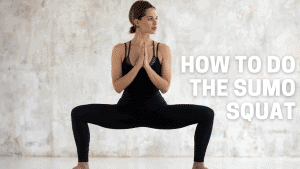Are cable hamstring curls an effective leg exercise?
The hamstrings may be a big muscle group but surprisingly they are also one of the most neglected parts of the body. With the coronavirus not going away anytime soon, many people will continue working from home because it is ideal, safe, and convenient.
But while you are unlikely to get infected at home, the chances of you experiencing back discomfort because of sitting all day increases. This is because when you are staying in one position for a long time like being in front of a computer for eight hours a day, there is zero engagement of the hamstrings.
And even when performing lower body exercises, the hamstrings do not necessarily get all the love all the time. This is because most of the time, people opt for more quad-centric exercises which do not work the hamstrings as much.
The consequence? Weak hamstrings that make you prone to injuries.
This is where the cable hamstring curl comes in. Even though this exercise is not as popular as the squat, the benefits are just as many.
What is a cable hamstring curl?
The cable hamstring curl is a variation of the leg curl that requires you to bend your knees and bring your heels towards your butt using a cable machine. This is an isolation exercise that targets and strengthens, well, the hamstrings which are the muscles located at the back of your thigh. They are responsible for most basic lower body movements such as walking, running, jumping, and any other activity that requires you to bend your knee and move your thigh back.
The movement during a hamstring curl is an effective way to strengthen not just the hamstrings but the gluteal and calf muscles as well. Building these lower body muscles especially the hamstrings decreases your risk of injury and makes you less prone to pain and discomfort. This is because strong hamstrings stabilize the knees, improving their ability to withstand the impact of any exercise.
How to do a cable hamstring curl
Despite being a lesser-known exercise, there is no denying how effective the cable hamstring curl is. If anything, it can even be more challenging than a regular leg curl because you do not get the same support that you would from a leg extension machine. Instead, you have to stabilize your entire body because the cable machine does not support you in a fixed position.
But even though the cable hamstring curl is usually performed while standing up, you can also perform it on a bench for added support.
Standing cable hamstring curl
1. Begin by attaching an ankle strap to the lowest pulley of the cable machine and loading the stack with enough weight that your legs will be able to curl without struggling.
2. Place a block in front of the machine for you to stand on to get a better range of motion.
3. Attach the strap to your left ankle and let your left foot dangle then stand on the block with your right foot.
4. Slightly bend your right knee then grab the machine with both hands for support.
5. Raise your left leg slowly and move it towards your butt by bending your knee.
6. Lift your foot as high as you comfortably can then pause at the top of the movement and squeeze your hamstrings.
7. Lower your legs slowly to return to the starting position.
8. Repeat according to your desired number of reps then perform the exercise using the other leg.
Lying cable hamstring curl
1. Begin by setting up a flat bench on a block to elevate it. You may also use a flat bench without elevating it, but doing so is more advisable because it provides you a better range of motion to efficiently activate the hamstrings.
2. Put the bench in front of the cable machine and place the grounded end close to the pulley.
3. Fasten an ankle cuff attachment to the low pulley and load enough weight on the stack.
4. Attach the ankle cuff to your ankles and lie in a prone position so that your knees are at the edge of the bench. Make sure that you can fully extend your legs and wrap your arms around the bench for balance and support.
5. Lift your legs towards your butt as high as you comfortably can by bending your knees and curling your ankles up.
6. Pause at the top of the movement then squeeze your hamstrings before lowering your legs back to the starting position.
7. Repeat according to your desired number of reps.
What do the hamstrings do?
The hamstrings are hugely responsible for our mobility. Aside from enabling us to bend our knees and move our thighs back, they also play an important role in our day-to-day movements like walking and running. Moreover, they also help with speed and power when playing sports or any physical activity and allow us to perform them explosively.
When the hamstrings are activated, they shorten and lengthen to allow us to do certain movements. During the concentric or shortening phase, you can bend your knees, while during the eccentric or lengthening phase, you can control the deceleration of your body.
One good example of this is when you are running downhill. As you descend, your hamstrings lengthen to enable you to control your speed. This prevents potential injury by decreasing the amount of pressure on the joints in your lower body.
The hamstrings are also responsible for stabilizing your hips and keeping your spine aligned. If you have weak and tight hamstrings, chances are they will pull on your hips which can compromise functional movement and result in poor posture with an arched lower back and rounded shoulders.
Why are strong hamstrings important?
The hamstrings and the muscles of the lower back work hand-in-hand, so if one is compromised, the rest of them will be as well. This is why it is wrong to target only one muscle group but neglect the other because building the hamstrings can remedy back issues too.
The hamstrings also provide powerful movement at the hip joints and stabilize the knee joints. If your hamstrings are too tight and weak, even an activity as simple as walking can be a struggle. What more if you were doing strenuous activities that involve your lower body muscles? Incorporating exercises such as the cable hamstring curl into your workout routine can significantly reduce your risk for injuries.
Lastly, strong hamstrings give you explosive power that allows you to run faster or jump higher. Sure, strong quads are crucial for these activities too, but without strong hamstrings, the movement will not be as powerful. Anyway, you do not have to choose which one is more important than the other because strengthening both your quads and hamstrings is necessary for an overall strong lower body. Strong quads are good, strong hamstrings are okay, but strong quads AND hamstrings will always be better.
Other leg curl variations for stronger hamstrings
Prone hamstring curl
1. Begin by tying a resistance band to a sturdy bar and placing it around one heel, then lie face down with your feet hip-width apart and flex your ankle.
2. Raise your legs as high as you comfortably can by bending your knee and bringing your heel towards your butt. Make sure that your thighs and hips remain in contact with the ground as you do this.
3. Once you have reached the top of the movement, squeeze your hamstrings first before lowering your legs to return to the starting position.
4. Repeat according to your desired number of reps.
Stability ball hamstring curl
1. Begin by lying down with only your upper back in contact with the ground and putting your calves and heels on a stability ball.
2. Make sure to flex your ankles and that your feet are hip-width apart on the ball then place your arms on the floor with the palms facing down.
3. Engage your glutes to raise your hips until your body is straight.
4. Lift your hips slowly then bend your knees while pulling your heels towards your butt to move the ball until it touches the soles of your feet.
5. Squeeze your hamstrings at the top of the movement then stretch out your knees to lower your hips back to the starting position.
6. Repeat according to your desired number of reps.
Dumbbell hamstring curl
1. Begin by lying down in a prone position with your arms folded in front of you.
2. Put a light dumbbell between your feet. If you do not have one, you may use ankle weights instead.
3. Raise your legs towards your butt by bending your knees.
4. Squeeze your hamstrings at the top of the movement lowering your legs to return to the starting position.
5. Repeat according to your desired number of reps.



